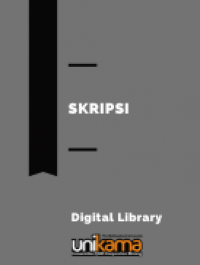
Electronic Resource
Types Of Talk Used Among Elt Students Of Universitas PGRI Kanjuruhan Malang In Having Academic Discussion
Speaking skill focuses on students’ ability in producing English orally as good as when they speak their native language. It enables students to express themselves creatively, imaginatively and to communicate with others effectively. However, there are a lot types of talk used among ELT students’ in having academic discussion. The scope of this study is used of Kovalainen and Kumpulainen (2007) theory. Thereby, this study aims to investigate the types of talk that the third semester students of English Education Department of Universitas PGRI Kanjuruhan Malang used in having academic discussion and to describe the students’ difficulties and strategies in having academic discussion. The research question of the study include 1) what types of talk do the ELT students use in having academic discussion? 2) what are the factors that influence ELT students' difficulty to speak in having academic discussion? 3) what are the strategies ELT students use to resolve the difficulty in having academic discussion?.
The study employed a descriptive qualitative design. The subject of the study is the third semester students of English Education Department of Universitas PGRI Kanjuruhan Malang. The object of the study was types of talk, students difficulties, and strategies in having academic discussion. The researcher in this study became the main instrument. This research was also supported by other instruments namely: observation and questionnaire. Additionally, to confirm the collected data from the observation, the 15 participants were collected the questionnaire. In analyzing the data, the researcher did data reduction, data display, and data conclusion drawing and verification.
The study found 2 types of talk used among ELT students’ in having academic discussion which include responsive and silent students’. In addition, there were 6 difficulties faced by students’ in having academic discussion which include 1) afraid, 2) less confident, 3) difficult in delivering an idea, 4) the internet connection, 5) did not understand the topic being discussed well, and 6) less of vocabulary. The dominant problems faced by students’ are less confident and less vocabulary (53%) and followed by afraid (33%), whereas the third position is taken by the internet connection (20%) Difficult in delivering an idea become the fourth position (13%), and the least problems faced by students are did not understand the topic being discussed well (6%). Meanwhile, there were three strategies used by the students to solve their difficulties in having academic discussion which include 1) trying to focus, 2) expressed their own idea, and 3) be more confident. The dominant strategies used by the students is be more confident (73%) and followed by expressed thei own idea (46%), and trying to focus become the least strategy by (20%). The study has limitation which is only investigate the types of talk, problems and strategies in having academic discussion by students’ perception. The researcher hopes that other researchers could continue this research at the related topic and find out other types of talk, difficulties and strategies in having academic discussion. Furthermore, the researcher recommends for other researchers to study difficulties and strategies in having academic discussion not only through questionnaire but also through interview to get more real situation about students’ problems and strategies
Ketersediaan
| 21345164/PB/2022 | KKI 420 KHO t/s | Perpustakaan Unikama | Tersedia |
Informasi Detail
- Judul Seri
-
-
- No. Panggil
-
KKI 420 KHO t/s
- Penerbit
- Malang : English Education Department-Unikama., 2022
- Deskripsi Fisik
-
xi, 55hlm 26cm
- Bahasa
-
Indonesia
- ISBN/ISSN
-
-
- Klasifikasi
-
420
- Tipe Isi
-
text
- Tipe Media
-
PDF
- Tipe Pembawa
-
-
- Edisi
-
1
- Subjek
- Info Detail Spesifik
-
-
- Pernyataan Tanggungjawab
-
-
Versi lain/terkait
Tidak tersedia versi lain
Lampiran Berkas
Komentar
Anda harus masuk sebelum memberikan komentar
 Karya Umum
Karya Umum  Filsafat
Filsafat  Agama
Agama  Ilmu-ilmu Sosial
Ilmu-ilmu Sosial  Bahasa
Bahasa  Ilmu-ilmu Murni
Ilmu-ilmu Murni  Ilmu-ilmu Terapan
Ilmu-ilmu Terapan  Kesenian, Hiburan, dan Olahraga
Kesenian, Hiburan, dan Olahraga  Kesusastraan
Kesusastraan  Geografi dan Sejarah
Geografi dan Sejarah